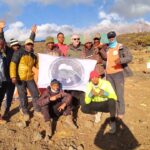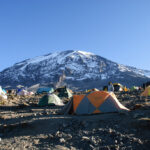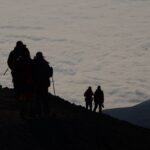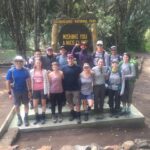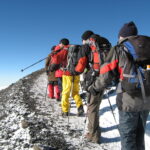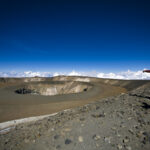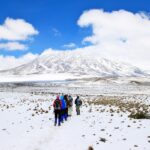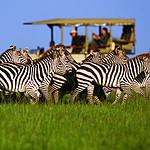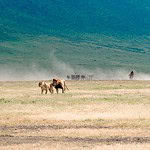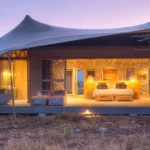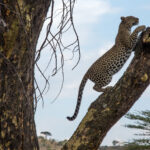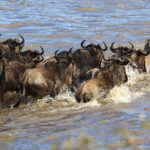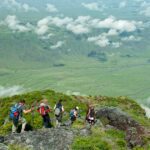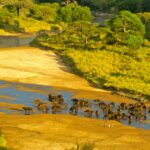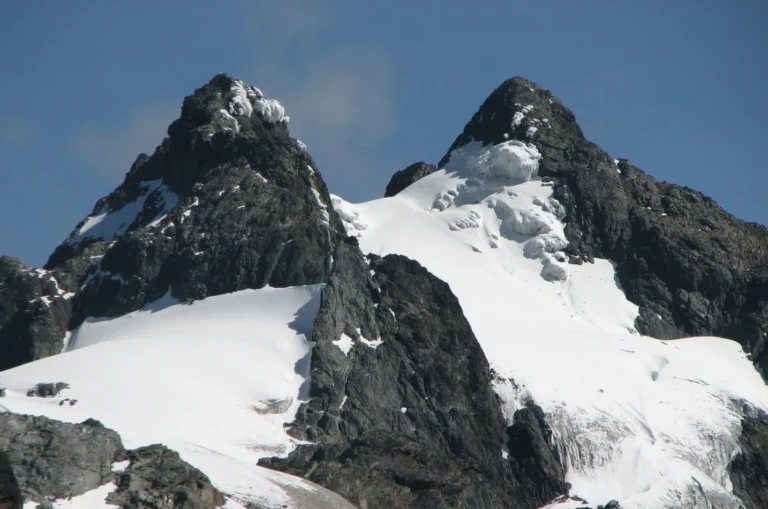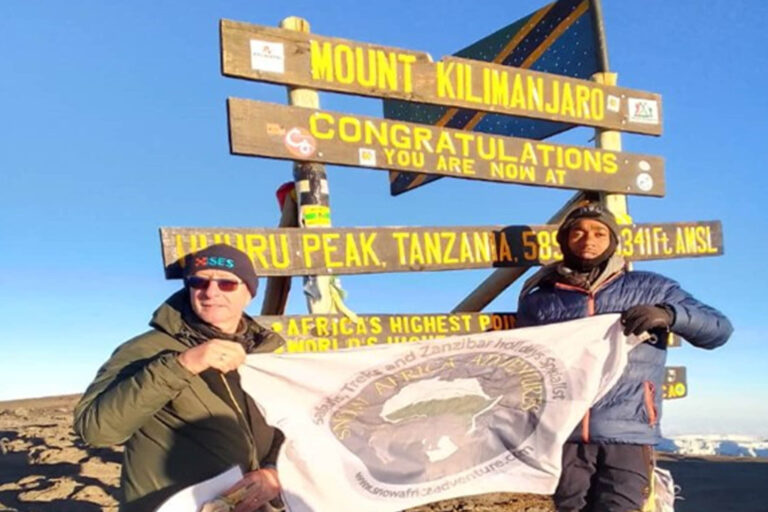Kilimanjaro Through the Eyes of Adventure Photographers: Stunning Visual Journey
Mount Kilimanjaro, Africa’s tallest peak and the world’s highest free-standing mountain, has long been a magnet for adventurers, climbers, and nature lovers. Rising majestically to 5,895 meters (19,341 feet), Kilimanjaro is not just a destination for trekking enthusiasts; it’s a dream location for photographers seeking to capture the essence of the African wilderness. From its lush rainforests to the barren Arctic-like summit, the mountain offers a diverse array of landscapes, each more breathtaking than the last.
In this article, we’ll explore Kilimanjaro photography through the lens of adventure photographers who have captured its stunning beauty. Kilimanjaro photography offers a variety of opportunities for capturing dramatic landscapes, from the dense forests at the base to the stark, icy summit. Photographers can take full advantage of the dynamic lighting, constantly changing weather, and unique perspectives that Kilimanjaro photography presents.
Whether you’re an experienced photographer or an amateur looking to document your journey, Kilimanjaro photography requires preparation and patience. Kilimanjaro photography requires the ability to adapt to varying altitudes, temperatures, and lighting conditions, which makes it an exciting yet challenging pursuit. The key to success in Kilimanjaro photography is understanding the best times to shoot, using the right equipment, and learning how to capture both the vastness of the landscape and the intimate moments of the trek.
Kilimanjaro photography offers various opportunities depending on the route you take. For example, if you choose the Machame route, you’ll have many opportunities for dramatic sunrise and sunset shots from high on the mountain, perfect for Kilimanjaro photography enthusiasts. The Rongai route, known for its solitude, offers quieter moments to capture intimate portraits of trekkers and porters amidst the wild beauty of the mountain.
Photographers focusing on Kilimanjaro photography should also plan for the unique lighting conditions that arise as the sun rises and sets, casting magical colors across the landscape. The varying climates of Kilimanjaro photography also offer fascinating contrasts—from lush, verdant rainforests to the high-altitude desert, photographers will be able to experience and photograph a wide array of natural environments during their climb.
One of the most iconic aspects of Kilimanjaro photography is the summit itself, where climbers can capture panoramic shots of the surrounding plains. The sense of accomplishment at the top of Africa provides an incredible opportunity for dramatic and awe-inspiring Kilimanjaro photography, with climbers often photographed celebrating their achievement with the expansive African landscape stretching out below.
For the ultimate Kilimanjaro photography, focus on capturing the journey as a whole: the porters, the climbers, the diverse landscapes, and, of course, the stunning sunsets and sunrises. Kilimanjaro photography is not just about capturing beautiful shots of the mountain itself, but also about documenting the personal journey that it takes to reach the summit.
To make the most of your Kilimanjaro photography, always be ready for spontaneous moments. Whether it’s a fleeting wildlife sighting or a unique weather condition, Kilimanjaro photography demands that photographers be prepared for the unexpected. The mountain has a way of offering surprises that can turn a good shot into a great one.
In conclusion, Kilimanjaro photography is an unforgettable experience. The opportunity to capture Africa’s tallest peak in all its glory provides photographers with memories and images that will last a lifetime. From the base of the mountain to the summit, Kilimanjaro photography offers countless ways to document your adventure, while also celebrating the incredible beauty of one of the world’s most iconic mountains.
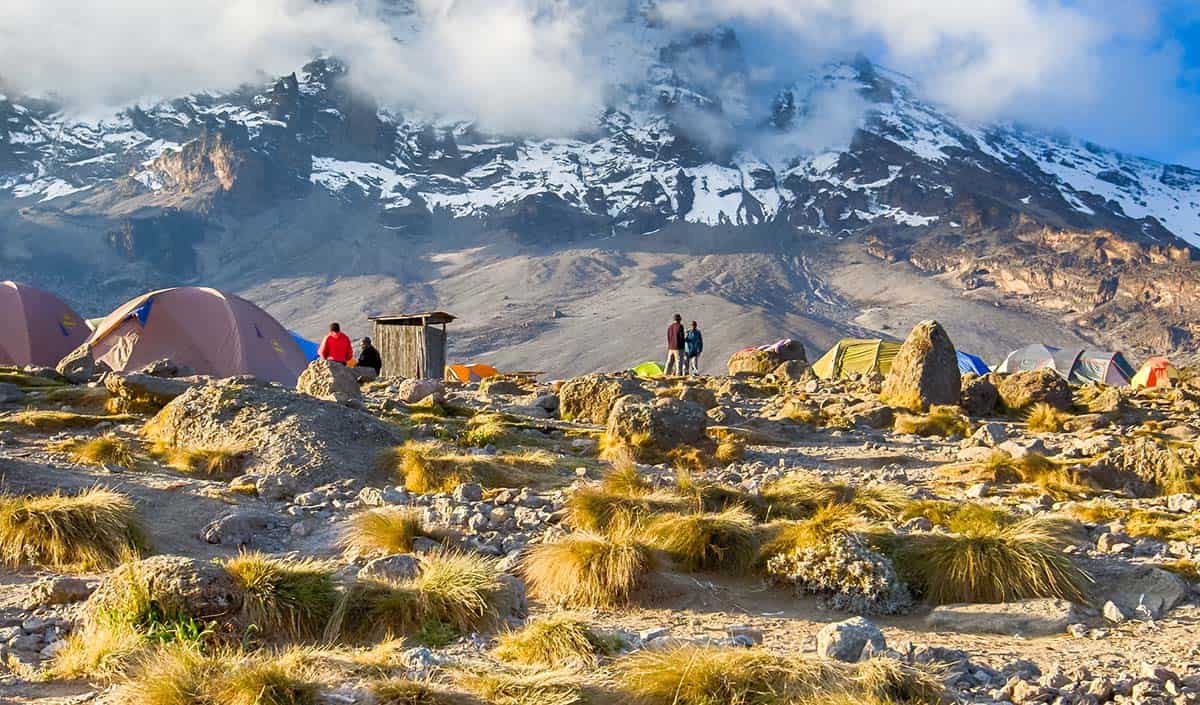
The Allure of Kilimanjaro: Why Photographers Flock to Its Slopes
Kilimanjaro is not just a mountain; it’s a symbol of adventure and natural beauty. The mountain’s unique geographic location near the equator allows it to support a wide variety of ecosystems, from tropical rainforests at its base to alpine deserts and glaciers near its summit. This rich diversity makes Kilimanjaro a paradise for photographers, offering countless opportunities to capture the raw beauty of nature.
1. Diverse Ecosystems: A Photographer’s Dream
- Rainforest Zone (1,800m – 2,800m): The lower slopes of Kilimanjaro are covered in lush rainforests, home to a variety of wildlife, including monkeys, birds, and exotic plants. The dense greenery, coupled with the play of light and shadow through the forest canopy, offers stunning photographic opportunities.
- Moorland Zone (2,800m – 4,000m): As you ascend, the rainforest gives way to a moorland landscape dotted with giant lobelias and senecios. The contrast between the strange, almost alien-like vegetation and the wide-open spaces creates a surreal environment perfect for photography.
- Alpine Desert Zone (4,000m – 5,000m): Further up, the landscape transforms into an arid alpine desert. The stark, barren terrain, with its dramatic views of the summit, is a striking contrast to the lush greenery below. This zone offers photographers the chance to capture the rugged beauty of Kilimanjaro in its most raw and unfiltered form.
- Arctic Zone (Above 5,000m): Near the summit, the landscape becomes more desolate, with glaciers and ice fields dominating the scene. The harsh, icy environment is both challenging and rewarding for photographers, offering a chance to capture the ethereal beauty of Kilimanjaro’s highest reaches.
2. The Changing Light: A Constantly Evolving Canvas
- Sunrise and Sunset: The light on Kilimanjaro is constantly changing, creating a dynamic and ever-evolving canvas for photographers. The golden hour, just after sunrise and before sunset, is particularly magical, bathing the mountain in warm, soft light that enhances its natural beauty.
- Night Photography: The clear, unpolluted skies of Kilimanjaro make it an excellent location for night photography. Photographers can capture stunning images of the Milky Way, star trails, and even the elusive Southern Cross, all set against the dramatic silhouette of the mountain.
3. The Human Element: Capturing the Spirit of Adventure
- Climbers and Porters: Kilimanjaro is not just about the landscape; it’s also about the people who climb it. Photographers have the opportunity to document the determination and resilience of climbers and the incredible strength and endurance of the porters who support them. These images not only tell the story of the mountain but also the stories of the people who conquer it.
- Cultural Encounters: The journey to Kilimanjaro often includes interactions with the local Chagga people, who live on the mountain’s lower slopes. Photographers can capture the vibrant culture and traditions of the Chagga, adding a human element to their visual narrative of the Kilimanjaro experience.
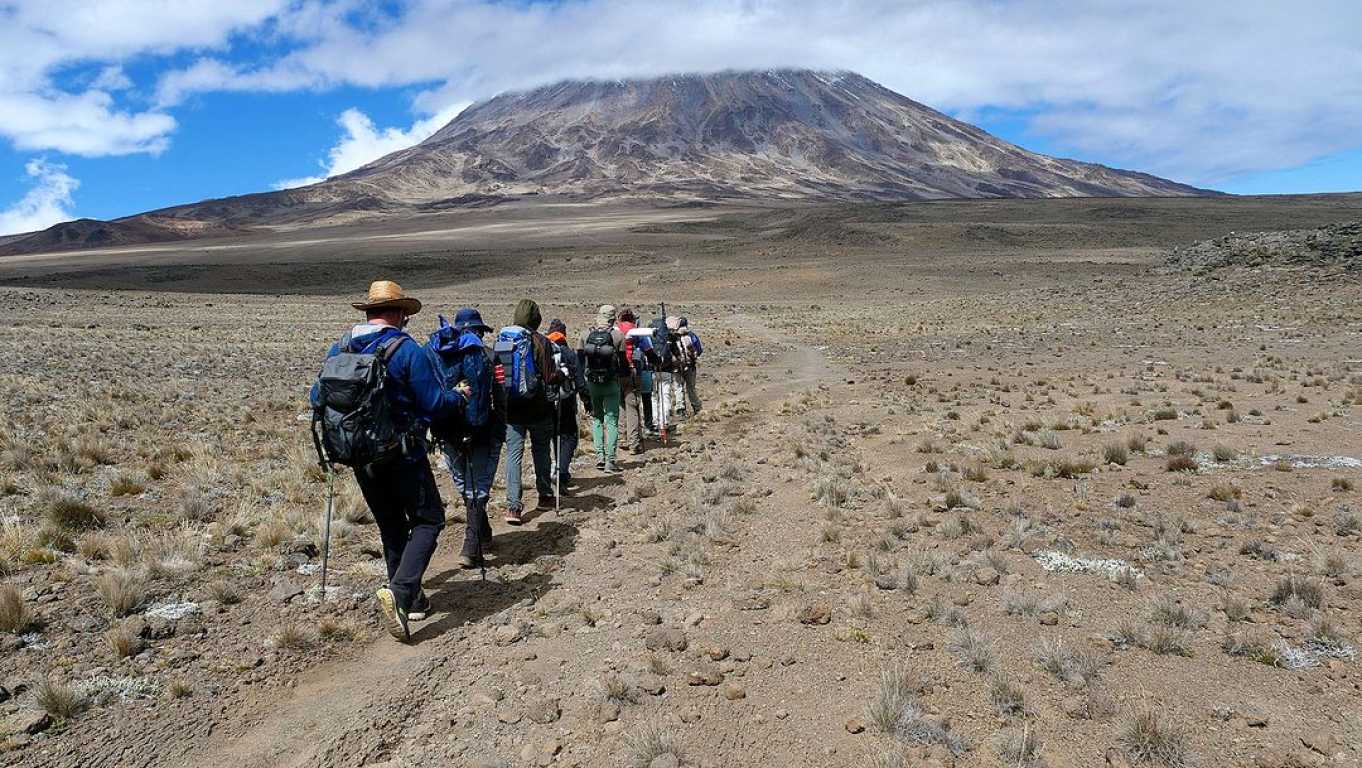
Photographing Kilimanjaro: Tips and Techniques
Photographing Kilimanjaro is a unique challenge, requiring careful preparation and consideration of various factors, including altitude, weather, and lighting conditions. Here are some tips and techniques to help photographers make the most of their Kilimanjaro adventure.
1. Preparing for the Climb: What to Pack
- Camera Gear: When climbing Kilimanjaro, it’s essential to pack light, but that doesn’t mean compromising on your photography equipment. A good quality DSLR or mirrorless camera with a wide-angle lens (for landscapes) and a telephoto lens (for wildlife) is a must. Don’t forget to bring extra batteries (the cold can drain them quickly), a lightweight tripod, and plenty of memory cards.
- Protective Gear: The weather on Kilimanjaro can be unpredictable, with sudden changes in temperature and conditions. Make sure your camera gear is protected from the elements with waterproof covers and insulated bags. A lens cleaning kit is also essential to keep your lenses free from dust and moisture.
2. Managing Altitude: Staying Safe While Shooting
- Acclimatization: Altitude sickness is a serious concern on Kilimanjaro, especially for photographers who may be exerting themselves more than usual. Take the time to acclimatize properly, and don’t push yourself too hard. Remember, your health comes first.
- Pacing Your Shots: The higher you go, the harder it becomes to focus and maintain steady hands. Pace yourself, and take breaks to rest and recover. Use these moments to capture the slower, more contemplative aspects of the climb.
3. Composing the Perfect Shot: Techniques for Stunning Photos
- Rule of Thirds: When composing your shots, use the rule of thirds to create balanced and dynamic images. Place key elements (like the summit or a climber) along the gridlines or at the intersection points for maximum impact.
- Leading Lines: Kilimanjaro’s trails, ridgelines, and glaciers provide excellent opportunities to use leading lines in your compositions. These lines guide the viewer’s eye through the image, creating a sense of depth and movement.
- Foreground Interest: Adding a foreground element, such as a plant, rock, or even a fellow climber, can add depth and context to your landscape shots. It helps to anchor the scene and provides a sense of scale.
4. Capturing the Essence of Kilimanjaro: Focus on Details
- Flora and Fauna: Don’t just focus on the grand landscapes; take the time to capture the smaller details that make Kilimanjaro unique. The strange and beautiful flora, such as giant groundsels and lobelias, as well as the diverse wildlife, can add rich layers to your photographic story.
- Textures and Patterns: The varying terrains of Kilimanjaro offer a wealth of textures and patterns, from the rough bark of trees in the rainforest to the intricate patterns in the glaciers. These details can create striking abstract images that tell a different side of the Kilimanjaro story.
Iconic Photographs of Kilimanjaro: A Visual Journey
Over the years, many photographers have captured stunning images of Kilimanjaro, each offering a unique perspective on this iconic mountain. Let’s take a visual journey through some of the most iconic photographs that have emerged from Kilimanjaro.
1. The Classic Summit Shot
- Description: The iconic image of climbers standing triumphantly at Uhuru Peak, the highest point in Africa, is a must-have shot for any Kilimanjaro photographer. The clear blue sky, the expansive view of the clouds below, and the famous wooden sign marking the summit make this a timeless photograph.
- Why It’s Iconic: This shot captures the essence of achievement and adventure, the culmination of a grueling climb and the realization of a lifelong dream.
2. The Glacial Landscape
- Description: Kilimanjaro’s glaciers, though rapidly receding, are a stunning sight. The jagged ice formations, contrasted against the dark volcanic rock and the blue sky, create a dramatic and otherworldly landscape.
- Why It’s Iconic: These images serve as a powerful reminder of the effects of climate change and the fragility of our planet’s natural wonders.
3. The Starry Night
- Description: Nighttime on Kilimanjaro offers a chance to capture the stunning African night sky. Photographs of the Milky Way arching over the mountain, or star trails circling above, create a sense of wonder and awe.
- Why It’s Iconic: These images highlight the remote and unspoiled beauty of Kilimanjaro, far from the lights and noise of civilization.
4. The Journey Through the Rainforest
- Description: The dense, mist-shrouded rainforest at the base of Kilimanjaro is a world of its own. Photographs of the towering trees, the lush undergrowth, and the wildlife that inhabits this zone offer a glimpse into the rich biodiversity of the mountain.
- Why It’s Iconic: These images contrast sharply with the barren summit, showing the incredible diversity of ecosystems on Kilimanjaro.
5. The Human Element
- Description: Portraits of climbers, porters, and local guides capture the spirit of human perseverance on Kilimanjaro. Whether it’s a candid shot of a climber resting or a porter carrying heavy loads with a smile, these images tell the human story behind the trek.
- Why It’s Iconic: These photos showcase the human connection to the mountain, illustrating the hard work, camaraderie, and cultural exchange that occur on the journey to the summit.
The Environmental Message: Kilimanjaro’s Changing Face
Kilimanjaro is not just a stunning photographic subject; it’s also a symbol of the broader environmental changes happening across the globe. The glaciers that once crowned the mountain are shrinking rapidly due to climate change, and experts predict that they could disappear entirely within the next few decades. Photographers who capture Kilimanjaro’s icy landscapes are not just documenting beauty but are also chronicling a disappearing world.
1. The Disappearing Glaciers
- Before and After Comparisons: Photographers who return to Kilimanjaro over the years have documented the dramatic reduction in the size of its glaciers. These before-and-after photos are a powerful testament to the impact of global warming.
- Raising Awareness: By sharing these images with a global audience, photographers can help raise awareness of the urgent need to protect our planet’s fragile ecosystems.
2. The Importance of Conservation Photography
- Documenting Change: Conservation photography plays a crucial role in documenting environmental changes and advocating for the protection of natural landscapes like Kilimanjaro.
- Inspiring Action: Powerful images can inspire people to take action, whether by supporting conservation efforts, reducing their carbon footprint, or simply becoming more aware of the issues facing our planet.
Conclusion: Capturing the Soul of Kilimanjaro
Kilimanjaro photography is about more than just capturing beautiful landscapes; it’s about telling the story of one of the world’s most iconic mountains. Through their lenses, adventure photographers can share the wonder of Kilimanjaro with the world, inspiring others to appreciate and protect this natural treasure.
Whether you’re a seasoned photographer or a novice with a passion for adventure, Kilimanjaro offers endless opportunities to create stunning images that will resonate with viewers. As you prepare for your own Kilimanjaro photography adventure, remember that each click of the shutter is a chance to capture not just a moment in time, but a piece of the mountain’s enduring legacy.
So, pack your gear, prepare for the climb, and get ready to embark on a visual journey that will not only challenge your skills as a photographer but also deepen your connection to one of the world’s most awe-inspiring landscapes.


